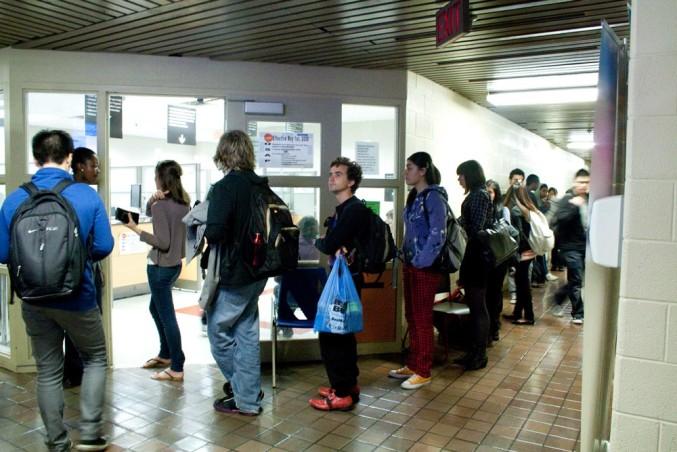By Lee Richardson
News Editor
A $70,000 emergency fund is available toRyerson students suffering from sudden financial crisis.
The fund, however, isn’t advertised by the university.
“It’s not widely advertised really, because there really isn’t that much money there,” said Vice Provost Students, Heather Lane Vetere. “It’s actually quite small in comparison to the total amount of student financial aid that’s given.”
The $70,000 emergency fund could help students like Nina, a second-year biology student who didn’t want her surname used.
“My car is a write-off so I don’t have a car to drive to work,” said Nina, referring to a recent car accident. While on vacation during the summer she was robbed, lost her phone, and her camera. She was also refused OSAP funding for the second year in a row.
“They said ‘there’s an overpayment on your account,’ so I paid them a couple of thousand dollars last year just to put my account into good standing so they could give me a loan,” said Nina. “This year they gave me the exact same issue.”
Nina now has to drop a course from her schedule in order to work more hours.
The emergency fund is set up to help students like Nina, but she – along with many other students – has never heard of the potential support.
The emergency fund, which is capped at $4,000, is designed to provide assistance to students who have exhausted all other funding options, such as OSAP and bursaries.
“Usually it has to do with something that has changed since they started school, since they applied for funding,” said Vetere. “If there’s some kind of crisis, if they become homeless, a father loses their job and can’t meet the funding commitments that was expected of the parents through OSAP.”
In total, just over $9.5 million in financial aid funding was distributed in the 2009/2010 academic year. One emergency loan, capped at $600 and required to be repaid within 30 days, was allocated during the same period. Emergency funding was distributed to 35 students. “Very few students could get it if there wasn’t a cap,” said Vetere. “Very few students can get it anyway.”
Some students, however, feel that such assistance should be more widely known.
“If it’s a service that they offer then it’s the responsibility of the university to somehow make sure that people know about it,” said first-year business management student, Daniel Aspler.










Aleksandra
in some of these circumstances, students be appealing OSAP denials. talk to Financial Aid. they can advise you about an appeal.
Daniel
This would not need to be widely published; students would find out about it through university staff and student services, when they seek options for help in the first place.
Also, $70,000 with a $4,00 limit per student really only means they can help about 17 students per year, so advertising it to many thousands would NOT be reasonable.